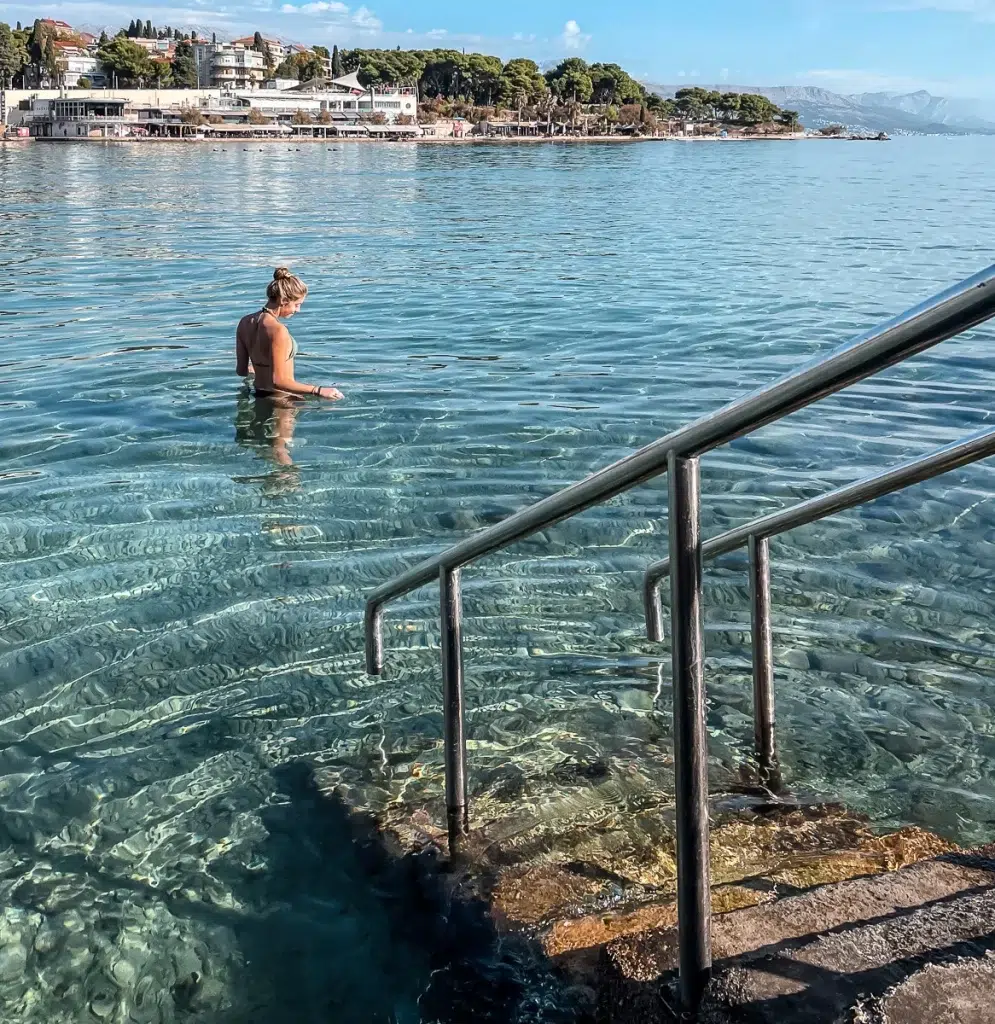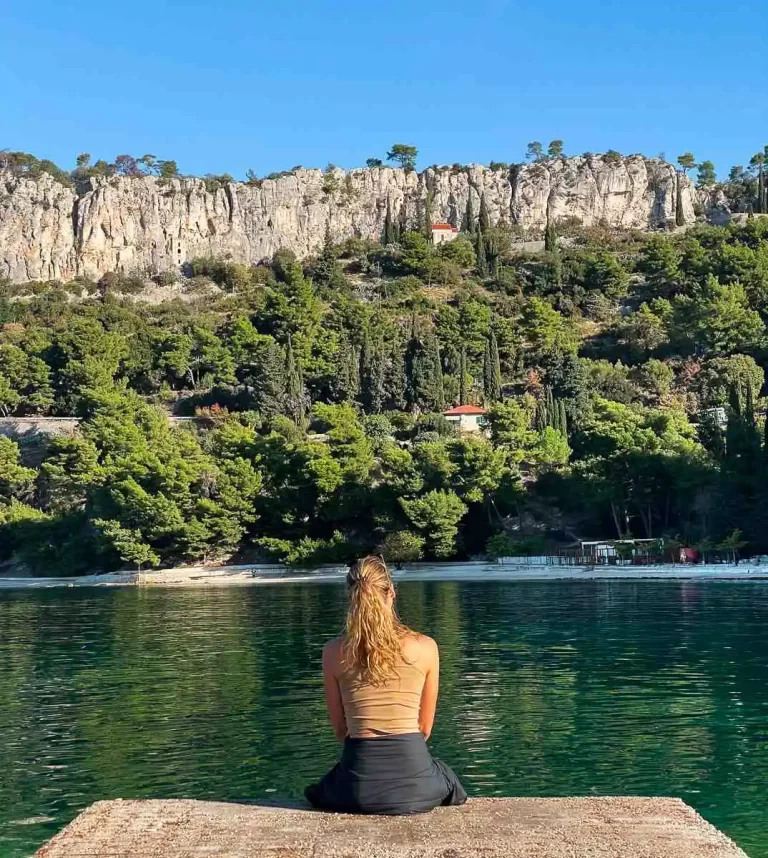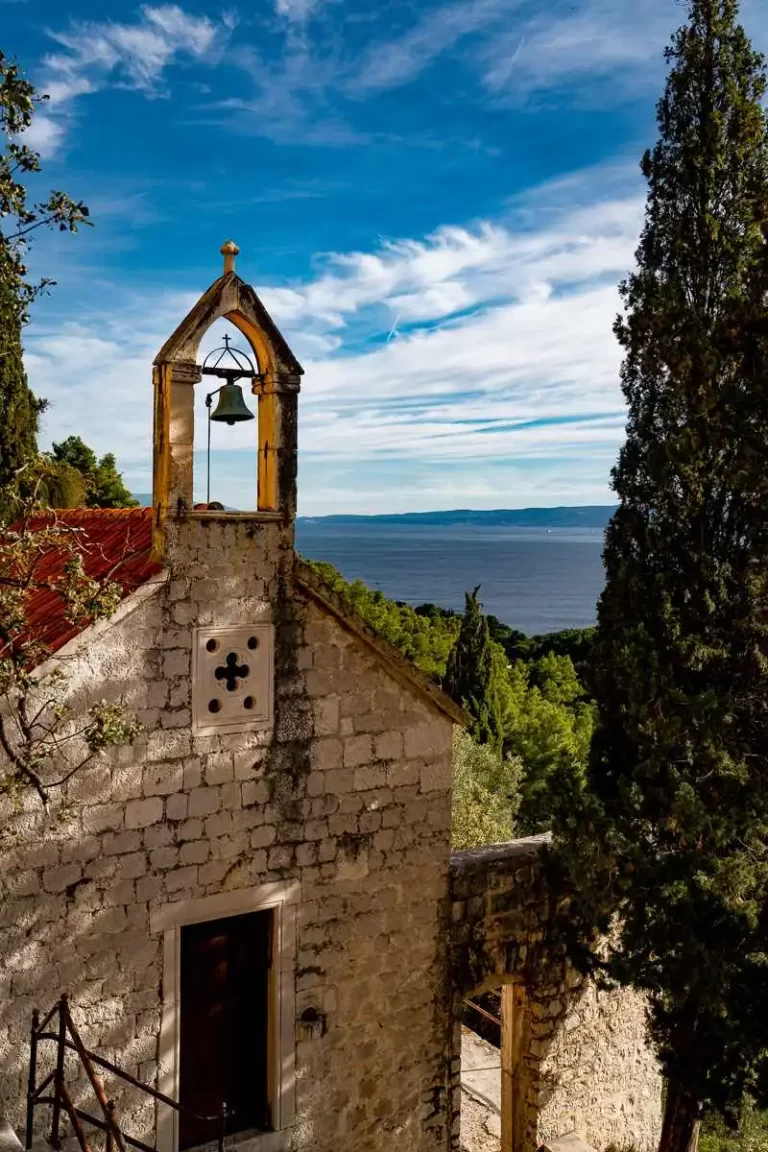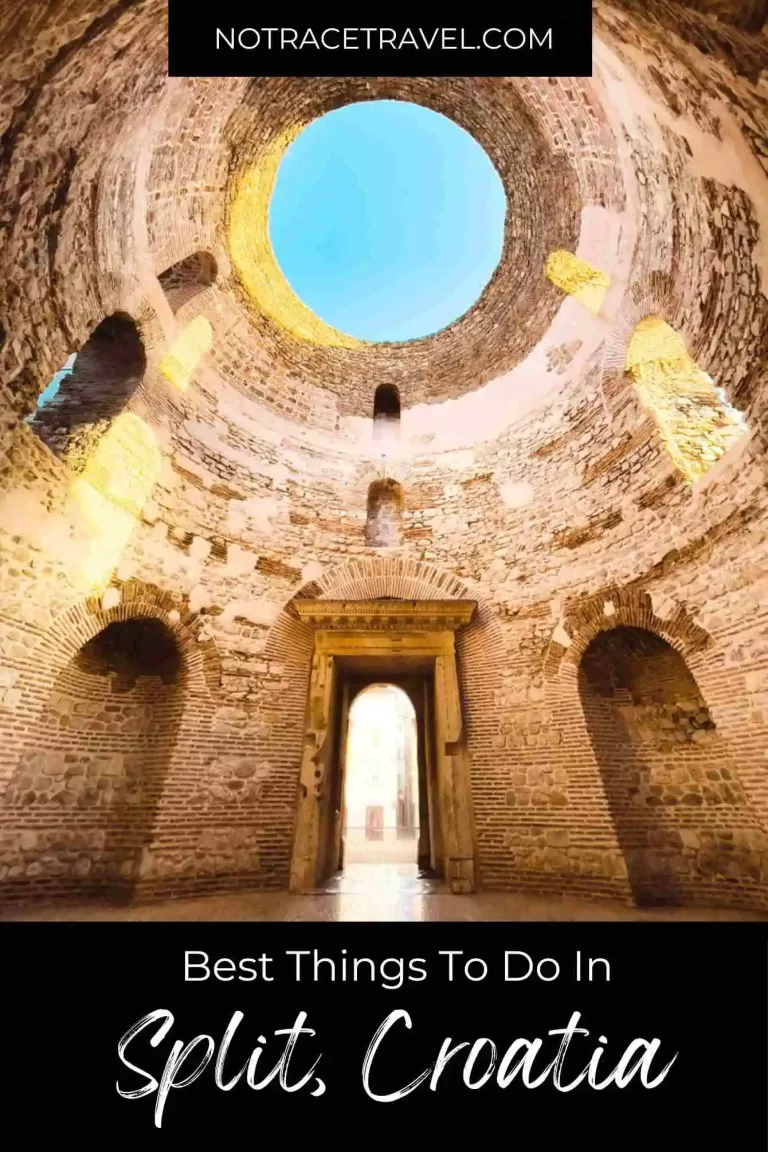Split, Croatia is a popular destination for travelers and locals for the stunning architecture of the old city, and the beaches along the Adriatic coastline. With so much history and nature, check out the best thing to do in Split, so you don’t miss a beat!
The city is affordable and easy to get around, especially for tourists and digital nomads! This is a great destination for solo travelers, new travelers, and digital nomads because of the infrastructure that is designed for tourists, the easy-going culture, and the beautiful location that anyone could get used to. Since Croatia is becoming a much bigger hotspot for tourists, it is best to go during the should-seasons of April & May, or September & October.

Table of Contents
Anything purchased through the links on this page helps me maintain this blog going. Thanks for supporting – Learn More.
If you're still not convinced, check out Why You Need To Visit Croatia!
When To Go To Split, Croatia
Croatia is becoming a more and more popular European destination. Split in particular is drawing in crowds for its beautiful architecture, lively nightlife, and accessible nature that fits everyone’s Mediterranean dreams.
With that, peak season (June-August), is crowded. The best time to visit is in the shoulder seasons before the crowds arrive in Spring (April & May), or once the crowds disperse in Autumn (September & October). Prices are lower, and you’ll have many of the main attractions all to yourself like we did in October!
Be sure to pack what you need, including good walking shoes, modest clothing, and swimwear of course! Check out the full European packing list so you have everything you need!
Croatia joined the EU and Schengen Region in January 2023, so it is no longer a viable option to wait out your time while you navigate the Schengen Visa rule, so be sure to track your time effectively!
Explore The Old City
As soon as you arrive in Split, Croatia, you will see that there is a magical atmosphere in the Old City around the Diocletian Palace. Originally constructed in the 3rd century by the Roman Emperor Diocletian for his retirement, this city has stunning architecture, picturesque views in every direction, and a smell of eggs (wait, what?)
The town was originally built here for the healing properties of the sulfur spring in the port, which has a particular egg smell in some specific areas. Take a walk along the water’s edge and see if you can see where it is boiling up!
Diocletian Palace & Bell Tower
The Diocletian Palace is an extraordinary construction, with a history that expands centuries. The gates on the city wall act as a portal that will transport you back in time, as you are suddenly meandering cobblestone streets and twisted alleyways.
The streets are filled with shops, restaurants, and mouth-watering gelato, but as you enter the palace center, you’ll know you’ve made it. A massive bell tower looms over the plaza, as you stand between it and the Temple of Jupiter, in awe.
The 57-meter bell tower is well worth the walk up the spiraling staircase, but for those with a slight fear of heights like me, it may take a few breaths to get to the top! You will get a great view of the city and marina, for only €5!

Open Sky Vestibule
As you come through the center of Diocletian’s Palace, you will have two options to get back to the waterfront; one option will go down the stairs into a very alluring dungeon-like tunnel, which you also need to check out, but the other option will take you to the Vestibul.
As you go up the stairs you will suddenly find yourself in a circular chamber construction that opens up to the sky. The construction is mesmerizing and feels like a sacred space that opens to the heavens.
There is also a quartet singing group that moves throughout the city, and if you’re lucky enough to catch them here in the Vestibule, you may confuse it for the singing of angels as their voices resonate in this chamber!

EIE Vintage Shop
What’s traveling to a beautiful and historic city without a little shopping? While walking through the weaving alleyways of the old town, you can’t miss the EIE Vintage shop! The owner has a contagious energy and zest for life, with the grooviest collection of clothing from her friends, family, and travelers who are passing through.
She knows the story of each piece of clothing, including where it is from, and who donated it. I’m currently writing this post in her mom’s cable-knit sweater in the wintery mountains of Austria, feeling so thankful and more connected to my clothing!
This was also a great place for us to donate some of the clothes that we weren’t planning to bring on to our next destination!

Shopping second-hand is a great way to reduce your carbon footprint. If you're going to shop while traveling, why not go to a unique boutique to get some unique clothes that come with a story?
Beaches
What would a visit to Croatia be without stopping at any of the beaches that are scattered along the coastline? It’s a great place to read a book, take a dip, or just sit back and watch as the boats go by.
The beaches are dotted along the coast of Split where ladders are built into the rocks as an invitation to soak in the salty water. The beaches themselves are a bit rocky, so be sure to bring a towel to lounge on, and don’t forget your ‘reef-safe’ sunscreen!
The water is warm (almost) all year, and we loved swimming and soaking up the sun in October & November when we visited. Be sure to know where the ‘FKK’ beaches are, meaning clothing-optional!
Bacvice Beach
Considered the ‘main’ beach in the city of Split, Bacvice Beach is just a short walk from the city center. This horseshoe cove is a swimming safe haven and great for beach games with friends. The beach lines a boardwalk of restaurants and cafes available to grab a bite while you’re soaking in the sun.
There are a lot of access points to enter the water, and if you continue to head east you’ll hit a few more beaches to check out! Just up the hill from Firule Beach, there is a park where you can find some shade and watch the waves from a vantage point.

Plaza Jezinac
Kasjuni Beach
Kasjuni Beach is a bit further walk, located on the southwestern portion of the Marjan Hill area. Accessible by foot, car, or bus, this beach has a crystal clear blue cove that is protected by the waves from a man-made palm-covered extension.
If you continue following the beach west, you’ll come to a Nude Beach area, marked by a few painted rocks. This area is relaxed and private as it continues down to reach massive boulders that follow the coastline.
Can you spot the hidden tower in the cliffside?

Marjan Hill
The Marjan Hill is where you will get the best views of Split, Croatia in every direction. This area is a nature lover’s haven to walk along the trees, take in the endless horizons, and learn some history along the way! While I was in Split for 1 month, my partner and I would visit the hill almost every day, to do some yoga, go for a run, journal, or catch the sunrise/sunset. To get to the base you’ll have to climb a massive staircase, but so worth it to get away from the crowds that come in on the weekends!
Teraca Vidilica Cafe
For anyone looking to take in the best view of Split, Croatia, you will need to make some time to grab a drink and sit back at the Teraca Vidilica. Located on Marjan Hill, this restaurant looks out over the city and port to the mountains that enclose the opposite side of the valley.
There is a viewing platform next to the restaurant, but this is a view you’ll want to stay for a while and enjoy without other tourists lining up to snap a photo. This is also a great spot for digital nomads looking to get some work done with a spectacular view and great wifi! My partner and I came to this cafe almost every day to work and enjoy a fresh Croatian beer and the best view in town.

St. Jerome Church
If you’re up for a beautiful walk, you need to explore St. Jerome Church and Karepic’s Tower. Located on the southwestern cliff-side of the hill, these constructions will amaze you, especially since they were constructed in the 13th century! At the end of a hairpin tin on a car road, you’ll find a dirt path that extends to follow the cliff line, and very shortly you will come across St. Jerome’s Church.
The church is still used on Christmas Eve where a small group gathers to celebrate together, and unfortunately, you can’t go inside to explore. After you get to St. Jerome Church, continue down the path until you come back to a road. From here, turn right and you’ll see on your right-hand side Karepic’s Tower!
Initially, we saw this tower from Kasjuni Beach and felt determined to check it out. Once we got to St. Jerome’s Church and the cave construction pictured below, we didn’t even realize that there was another tower constructed into the cliff! Check it out for yourself and see if you can find the tower on the hill.

VHR Telegrin (The Top)
After accomplishing the seemingly never-ending steps and passing the local zoo, you’ll come to the top of Marjan Hill where a Croatian flag and cross tower over the stunning scenery. There is a big observation deck and small trails that lead to more private and peaceful benches. A great destination for sunrise or sunset, and well worth the walk! The best part is this is just the start of everything you can explore on Marjan Hill. Keep walking and you’ll come across a Botanical Garden, a Labyrinth, and Baba Marta’s House!

Klis Fortress
Overlooking the valley with views of the Split metropolitan stands a historic fortress that has over 2,000 years of history. The fortress was first constructed by the Illyrians, and later used by the Romans, Ottomans, and Austro-Hungarians and has been the seat for numerous Croatian kings!
The history is fascinating, the views are outstanding but the best part is that you can explore it freely. No tours and no lines as only 15,000 people visit the fortress a year! When we visited on a perfect day in November, there were only a handful of people we saw in the distance, so we were able to freely explore. The Fortress is open daily from 10:00-17:00 and only costs €8!
Pro Tip: bring a bottle of wine and fancy goblets for the best glass of wine you’ll ever have!
The fortress is easily accessible from the city, only 40 minutes on bus 22 which leaves from the HRK National Theater Station. Check with the clerk at the station to make sure the bus schedule is accurate.

Ferry Trip To Hvar
If you’ve walked around Split enough and you’re looking for a change of scenery, catching a ferry over to Hvar Island is an easy day trip and super affordable. You have 2 options to explore Hvar; take a ferry from Split and explore everything on your own, or go on a tour so you can sit back and enjoy the planned excursions! The ferry disembarks in the town of Hvar, which is a rustic town center that backs up to a Spanish Fortress.
The town is worth exploring, and the fortress can be explored for just €4 but may be closed in the off-season. Hvar Island is also home to some incredible beaches, a pretty wild party scene, and unreal sea caves you have to explore!
Check out the tours to explore Blue Cave on Bisevo Island and Green Cave on Ravnik Island. The boats enter sea caves where sunrays illuminate the cave with a stunning blue/green color.
Krka National Park
Krka National Park is only a 1.5-hour journey from the city of Split, with many options via public transport, with guided tours, or you can explore it at your own pace. The entrance fee differs drastically between off-season at only €4, to peak-season at €26! No matter how you get there, you will start at Skradin where you will catch a ferry to Skradinski Buk waterfalls. If you do choose to go on a tour, make sure the park entry fee is included with the price, because it isn’t always, which can be a surprising cost!
Krka National Park is one of the most popular day trips from Split, so if you’re traveling in peak season, be sure to make your plans early before it all books up! Of everyone we talked to who had been to both, almost everyone prefers Krka National Park more, even though you cannot swim at Krka anymore.
Krka is best visited by tour, check out the options below through GetYourGuide!
Day Trip into the Balkans
There is so much to see beyond Split, so don’t let your adventures end there! Split is a great jumping-off point to explore more along the Dalmatian coast or venture further inland.
Take a day trip down to Dubrovnik, the most iconic town in Croatia, or check out a ferry trip up the coast to Zadar. There are so many islands to see along the way on this stunning ride up the Istrian coast, and you might even spot some dolphins!
If you are feeling more adventurous, rent a car and head into the neighboring country Bosnia & Herzegovina! There are so many sites to see in this country that get overlooked, like the idyllic destination of Mostar!
Summary - What to Do In & Around Split, Croatia
Whether you’re in Split for a few days or a few months, you will never run out of things to do in this beautiful and historic city. You can explore the city center on foot, experience the magnificence of the Diocletian Palace, or get lost on Marjan Hill among the trees. There are endless churches including St. Jerome Church, which was constructed in a cave on the cliff side, and even more beaches! Within a short drive from the city, you can get to the many islands including Hvar’s Blue Caves, or check out the waterfalls at the national parks of Krka and Plitvice Lakes!
Split is a clean and friendly city that is easy to explore. It is affordable with breathtaking views of the Adriatic Sea that you cannot miss on your European travels.
Explore the other destinations waiting for you in Europe!








